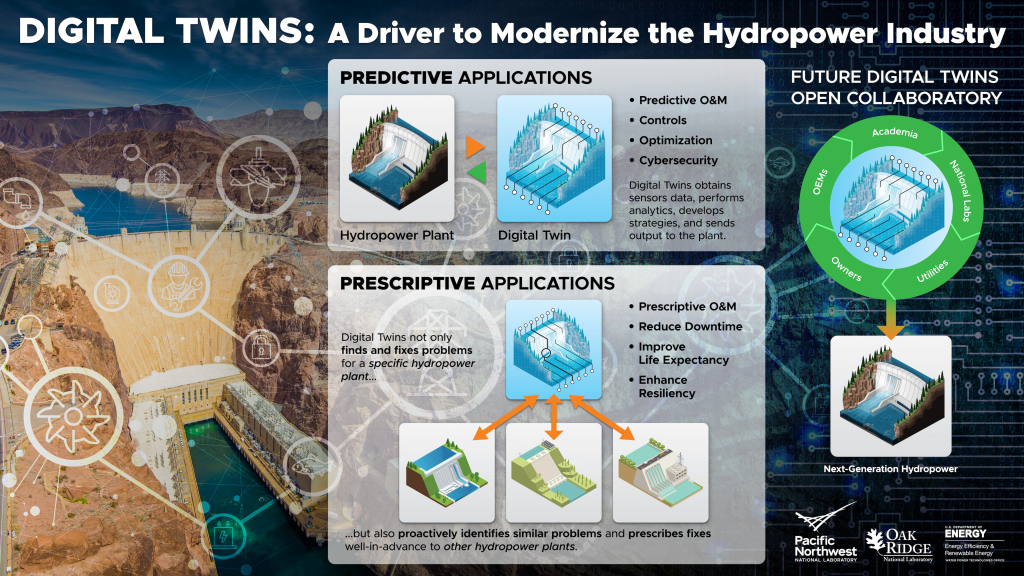Motivation and Vision for the DTHS Effort
The U.S. hydropower fleet, with an average machine age of 64 years, will require modernization to sustain and improve the value (benefits versus cost) and reliability of the nation's longest-serving renewable energy technology. The evolution of hydropower’s primary role as an energy provider towards the additional role of assuring power system reliability and resiliency amidst the integration of variable renewable energy production has created complex and demanding operations and planning challenges for hydropower asset managers, owners, and stakeholders. These challenges will be difficult to overcome without the benefits of the best available and future advancements in sensors, data and control systems, analytics, simulation, optimization, cybersecurity, and computing capabilities. The scoping, specification, and roadmap for a DTHS-OPF is an early step within a long-term vision for WPTO-led research that addresses these hydropower digitalization challenges. That vision includes development and widespread adoption, more than 5 years hence, of an extensible DTHS-OPF as a best practice and baseline digitalization technology for optimal design, operation, and management of hydropower assets to assure and enhance reliability, performance, and value.
Background for the DTHS Effort
What is a digital twin? A digital twin (DT) is the coupling of virtual computational model and a real-world physical system. Monitoring of the physical system and comparison to the virtual model enables robust control and optimization of the physical system and evolution of the model. Through data and feedback, both virtualized and real, a DT can develop capacities for autonomy to learn from and reason about its environment. A DT can be defined, fundamentally, as an evolving digital profile of the historical and current behavior of a physical asset or process that enables the optimization of the asset or process. DT methodology has been embraced by the manufacturing and automotive industrial sectors, and is beginning to be used by the electricity sector.
What is an Open Platform Framework and why is it important? One of the fundamental challenges that DTHS needs to address is affordability. The DTHS should be affordable to implement and operate. It should be simple enough so that it can be operated by technical workforce that can be easily accessible and can be trained. Regarding data use and integration, DTHS should have both backward and forward compatibility. In other words, DTHS should provide a platform that can integrate data from both heterogenous legacy systems and devices and new sensors and equipment using open interoperable protocols and using an open system architecture for creating solutions. We believe an open platform DTHS or DTHS-OPF is the best path forward for providing affordability while offering wide coverage on data integration. In developing the DTHS-OPF, we envisage it to have certain features and functionalities in terms of: 1) internet of things (IoT) platform capability; 2) data acquisition and integration; 3) configuration that allows user friendly data definitions; 4) data processing, modeling and management. The DTHS-OPF will also have an applications layer for predictive analytics, control, optimization and grid services with an effective user interface. The DTHS-OPF will be designed to be open access and will serve as an R&D platform for accelerating the pace of developing new technologies for the significant growth and sustainability of the hydropower industry, national labs, and academia.
Contacts:
Hong Wang Osman Ahmed
Wangh6@ornl.gov Osman.ahmed@pnnl.gov


